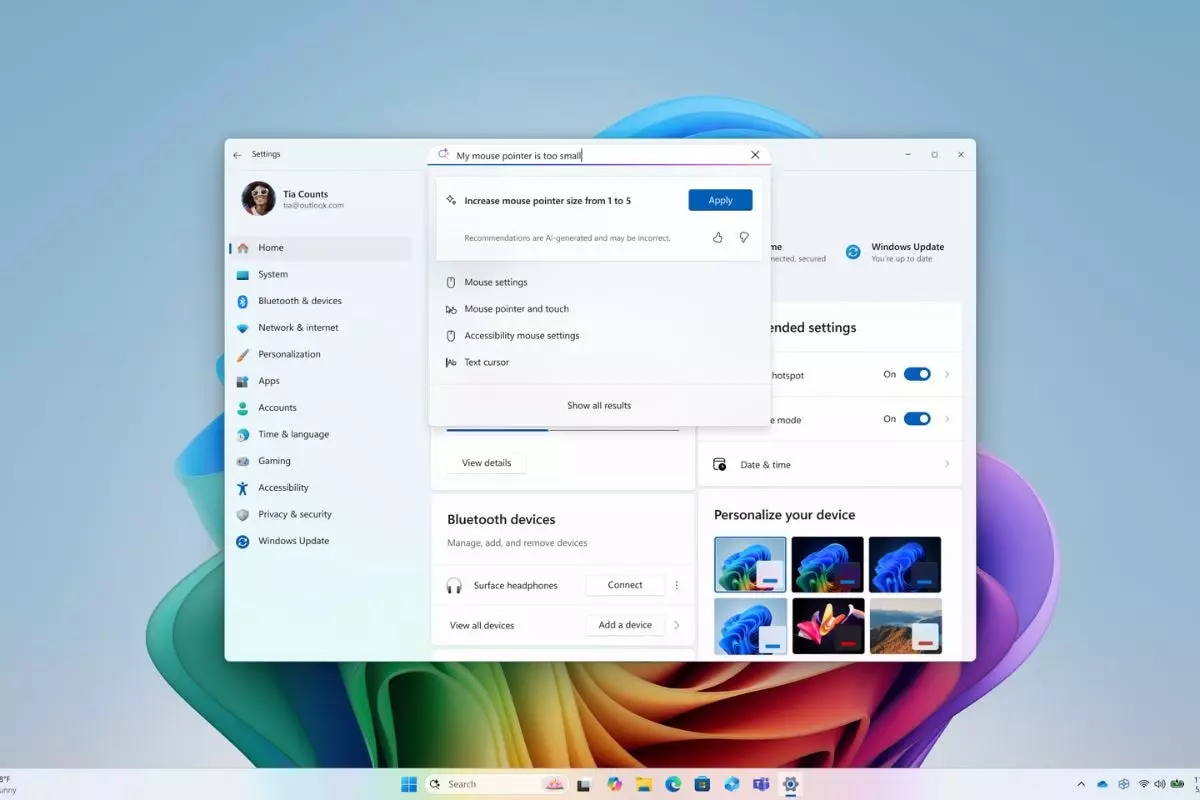In the ever-evolving world of technology, Microsoft has taken a decisive step forward by introducing its Mu model, a localized artificial intelligence designed to empower users directly on their devices. By harnessing the capabilities of this small language model (SLM), Microsoft aims to redefine user interaction with Windows 11’s settings. This innovation captures a pivotal moment in the ongoing conversation about the balance between personalization and user autonomy. To say this is merely a technical upgrade would be an underestimation; it’s a bold move toward democratizing artificial intelligence.
Breaking Down the Technical Walls
At the core of Mu lies an architecture that allows for significant feats of efficiency. With its 330 million token parameters, the model is built on a transformer-based encoder-decoder framework, which in itself is not groundbreaking. However, what elevates Mu to a new tier is its optimized deployment on neural processing units (NPUs)—a choice that acknowledges the constraints inherent in mobile computing. While many companies aim for cloud-based solutions, Microsoft’s commitment to delivering functionality directly on users’ devices is revolutionary. This not only enhances processing speed but also emphasizes user privacy by minimizing data transmission over the internet.
The astounding claims of performance—over 100 tokens per second—speak to their relentless pursuit of optimization. In a world where user patience is thinning, the quick responsiveness of Mu serves as a critical factor in user experience. However, is it fair to be skeptical of this claim? In an era where technical boasts are commonplace, one has to wonder whether this level of efficiency can be continuously sustained in real-world application scenarios.
Training with Purpose and Precision
The training methodology that Microsoft employed can only be described as industrious. They gathered from a staggering 3.6 million examples to teach Mu the nuances of user commands. By utilizing task-specific data and engaging in low-rank adaptation, Microsoft seems focused on not merely creating a model that responds correctly but one that preempts user intentions. Yet, the question remains: Can the AI adapt evenly across different linguistic contexts?
The challenges faced during this training phase, particularly regarding vague or ambiguous queries, highlight a fundamental gap in current AI capabilities. Microsoft’s choice to revert to traditional keyword searches for these queries might be seen as a pragmatic stopgap. It emphasizes a growing recognition that while AI can assist, it is not yet infallible. This is a critical observation in a society that often demands immediate satisfaction from technological advancements.
Governance by AI: A Double-Edged Sword
However, as we step deeper into this world where AI can control hundreds of system settings, we encounter an ethical dilemma that cannot be ignored. The increasing reliance on AI to dictate user actions brings us to the edge of convenience and potentially unregulated power. Are we, as users, surrendering our agency in favor of ease? More pointedly, at what point does the convenience of AI overshadow the critical responsibility of understanding our devices?
As Microsoft refines Mu to bridge its language-based gaps, one has to consider the broader implications of such technology. The idea that an AI model can interpret and carry out commands based on the intricacies of human language signifies a remarkable leap forward. Yet, it also raises concerns about over-reliance on technology to interpret our needs—could this lead to a future where we’re less inclined to understand or interact with our devices on a fundamental level?
The Market Reaction and Societal Expectations
The reception to Microsoft’s Mu model will reveal much about society’s shifting expectations of technology. In a world increasingly conditioned by rapid advancements, do consumers truly desire more autonomy, or are they willing to hand over key functionalities to AI-driven models? As the likes of Mu emerge in the competitive landscape, companies will have to step up their game not just in performance but in transparency and ethical considerations.
The juxtaposition of technological advancement against ethical foresight offers a complex landscape for both consumers and corporations. Microsoft stands at the precipice of this dual challenge; leveraging the powerful capabilities of AI while nurturing a relationship built on trust with its users. As we move further down this road, the conversation around AI’s integration into our lives will only grow in significance.

